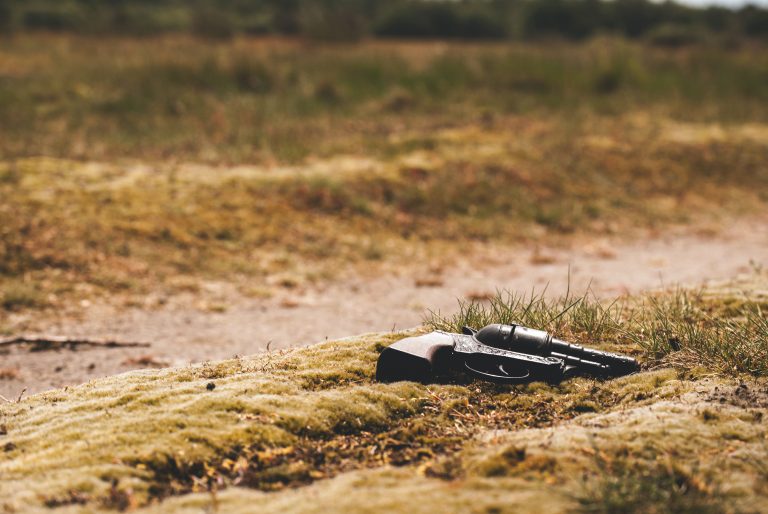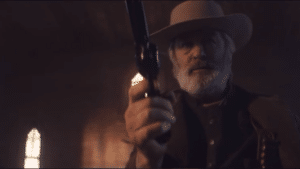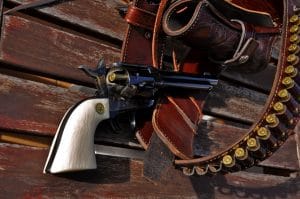There are a lot of things that had to go wrong on the set of Alec Baldwin’s latest movie for a crew member to end up shot dead. Live ammunition had to make its way into the gun and it had to be pointed at Halyna Hutchins when it fired. And, nobody had to step in to stop either of those steps along the way.
But, there’s one factor that underlies all of those mistakes: complacency.
As with all safety protocols, those designed to keep the crew safe on a movie set while guns are being handled only provide protection so long as everyone is vigilant in following them. That responsibility falls first and foremost with the person on set who is responsible for overseeing gun safety on set. However, it extends to anyone involved in handling the firearms or setting up scenes that use them.
The attitude Baldwin displayed towards safety protocols belays a serious problem on the set of Rust and, perhaps, across the industry.
“When that person who was charged with that job handed me the weapon, I trusted them,” Baldwin told ABC News.
There is nothing wrong with trusting the professional who is there to oversee the guns. But, Baldwin’s approach goes much further than just that. When asked what the actor’s responsibility is in regards to gun safety on set, he took an extremely narrow view.
“The actor’s responsibility is to do what the prop armorer tells them to do,” he said.
He said he developed his approach early in his career after being admonished by a prop master for attempting to check the loadout of a prop gun.
“If I took a gun and I popped the clip out of a gun or I manipulated the chamber on a gun, they would take the gun away from me and redo it,” Baldwin said. “The prop person said ‘don’t do that’ when I was young.”
There is a reasonable concern with actors messing up the loadout for the scene, but the next piece of advice Baldwin was given is completely unreasonable. And, unfortunately, it stuck.
“They’d say ‘one thing you need to understand is we don’t want the actor to be the last line of defense against a catastrophic breach of safety with the gun,'” Baldwin told ABC News. “They told me ‘my job is to make sure the gun is safe and then I hand you the gun and declare that it’s safe. The crew is not relying on you to say it’s safe. They’re relying on me to say that it’s safe.'”
Actors should not be the only line of defense on set when it comes to gun accidents. However, the idea they have no agency in the matter and are mere vessels for what somebody else tells them is absurd. Anyone handling a gun should understand the risks involved and how to mitigate those risks.
It is not necessary for the actor themselves to physically check the state of the gun in order for them to be involved in keeping everyone on set safe. In fact, Baldwin describes the exact procedure for accomplishing this during his interview.
“The prop person would come and sometimes they would insist on demonstrating for you and the camera crew,” he said. “They would take the gun, if it was a contemporary gun, they’d show you the chamber, they’d show you the clip, they’d say ‘the gun is cold.'”
An actor could, and should, request this procedure be done each time they’re handed a gun in order to verify things are as they should be. Baldwin said he didn’t speak up when other armorers didn’t employ this procedure because he “trusted them to do the job.”
“And I never had a problem,” he said.
Until he did. And that’s always the problem with becoming complacent while handling weapons. Just because being lax or transferring all your safety responsibilities to somebody else worked before, even for 40 years, doesn’t guarantee it will always work.
But, as he said, this is how Baldwin had always done things and it hadn’t been a problem. He’d grown accustomed to handling guns on set without needing to do anything other than trusting the word of whoever handed it to him. He’d become comfortably complacent.
He wasn’t alone either.
Lisa Torraco, a lawyer for Assistant Director Dave Halls, said checking the gun to ensure it wasn’t loaded before he handed it to Baldwin was not his responsibility either. She added that “expecting an assistant director to check a firearm is like telling the assistant director to check the camera angle or telling the assistant director to check sound or lighting.”
At least three people handled the gun before it was used to accidentally kill Halyna Hutchins. Two of them now argue they had zero responsibility to ensure the gun was, at the very least, not loaded with live ammunition.
Somebody, anybody, should have spoken up. Should’ve done something.
But, nobody did. Because that’s how they’d always done it. And, even if it always added to the danger level, it hadn’t been a problem.
Until it was.






